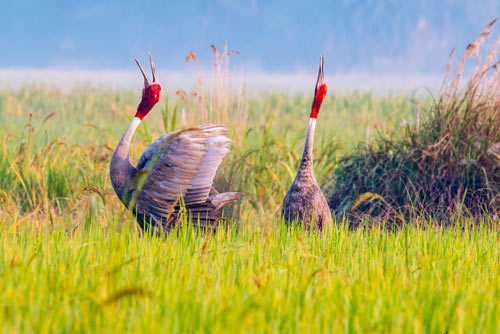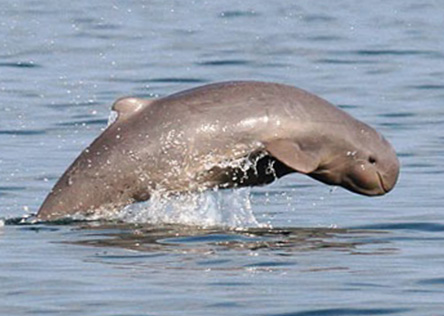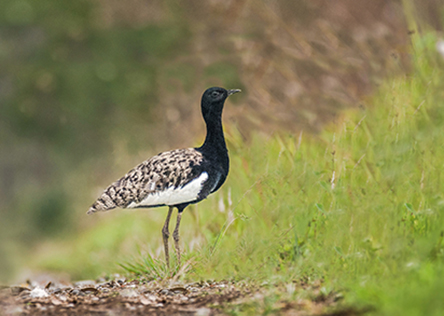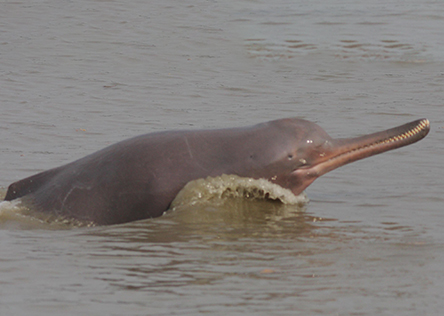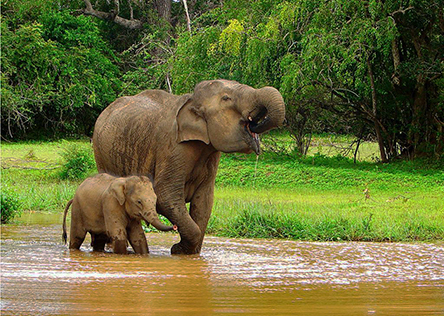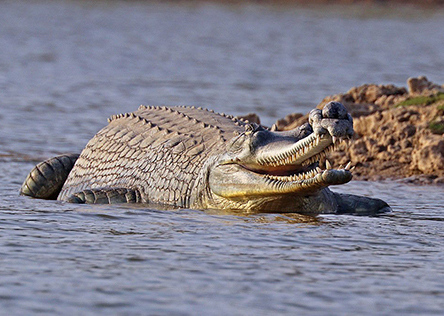Promotion of Action Against Marine Plastic Litter in Asia and the Pacific (CounterMEASURE II)
Latest News
1 March 2022 UN Report Assesses Risk of Plastic Pollution to Migratory Species in Ganges and Mekong Rivers
31 August 2021 New UN Report Finds Migratory Species Are Likely Among the Most Vulnerable to Plastic Pollution
20 April 2021 UNEP and Google partner to hunt for plastic pollution with machine learning
25 March 2021 Plastic pollution threatens the Mekong, a wildlife wonderland
17 March 2021 The hidden pandemic of single-use plastic
6 October 2020 Second Phase of CounterMEASURE to investigate impact of plastic pollution on wildlife
24 August 2020 CounterMEASURE features in graduate course in plastics
What is the CounterMEASURE II project?
The Promotion of Action against Marine Plastic Litter in Asia and the Pacific (CounterMEASURE II) is a USD 5.7-million project funded by the Government of Japan. The project aims to generate, share and disseminate scientific knowledge on plastic pollution in the Mekong, Ganges and selected rivers in Sri Lanka and Myanmar to inform policy and decision-making processes at the local, national, regional and global level.
The United Nations Environment Programme (UNEP) Regional Office for Asia and the Pacific is the implementing agency of the project. In partnership with the UNEP Regional Office, the CMS Secretariat will implement activities under the Migratory Species Focal Area of the project. The activities will help generate new scientific knowledge on the impact of plastic pollution on migratory species in the Mekong and Ganges River Basins.
Plastic pollution in terrestrial and freshwater ecosystems
Although much research on plastic pollution has focused on the marine environment, it is known that the majority of plastics is used and disposed of on land and both terrestrial and freshwater ecosystems are also subject to plastic pollution[1]. Jambeck et al. (2015)[2] estimated that annually between 4.8 million and 12.7 million tons of land-based plastic waste ends up in the ocean, and rivers carry 1.15 million to 2.41 million tons of plastic waste to the ocean. A recent estimate also indicates that at least 14m tonnes of plastic pieces less than 5mm wide reside on the sea floor[3]. However, little is known about the impact of plastic pollution on wildlife in terrestrial and freshwater ecosystems.
What are the impacts of plastics on migratory species?
Plastic causes the deaths of more than a million seabirds and of more than 100,000 marine mammals[4] every year. The impact of plastics on wildlife can be categorized into two types: entanglement and ingestion.

Entanglement with plastic items such as fishing nets can cause injuries, strangulation, reduction of feeding efficiency and drowning.
Ghost fishing gear refers to equipment used in fisheries that has been discarded, lost, or abandoned.
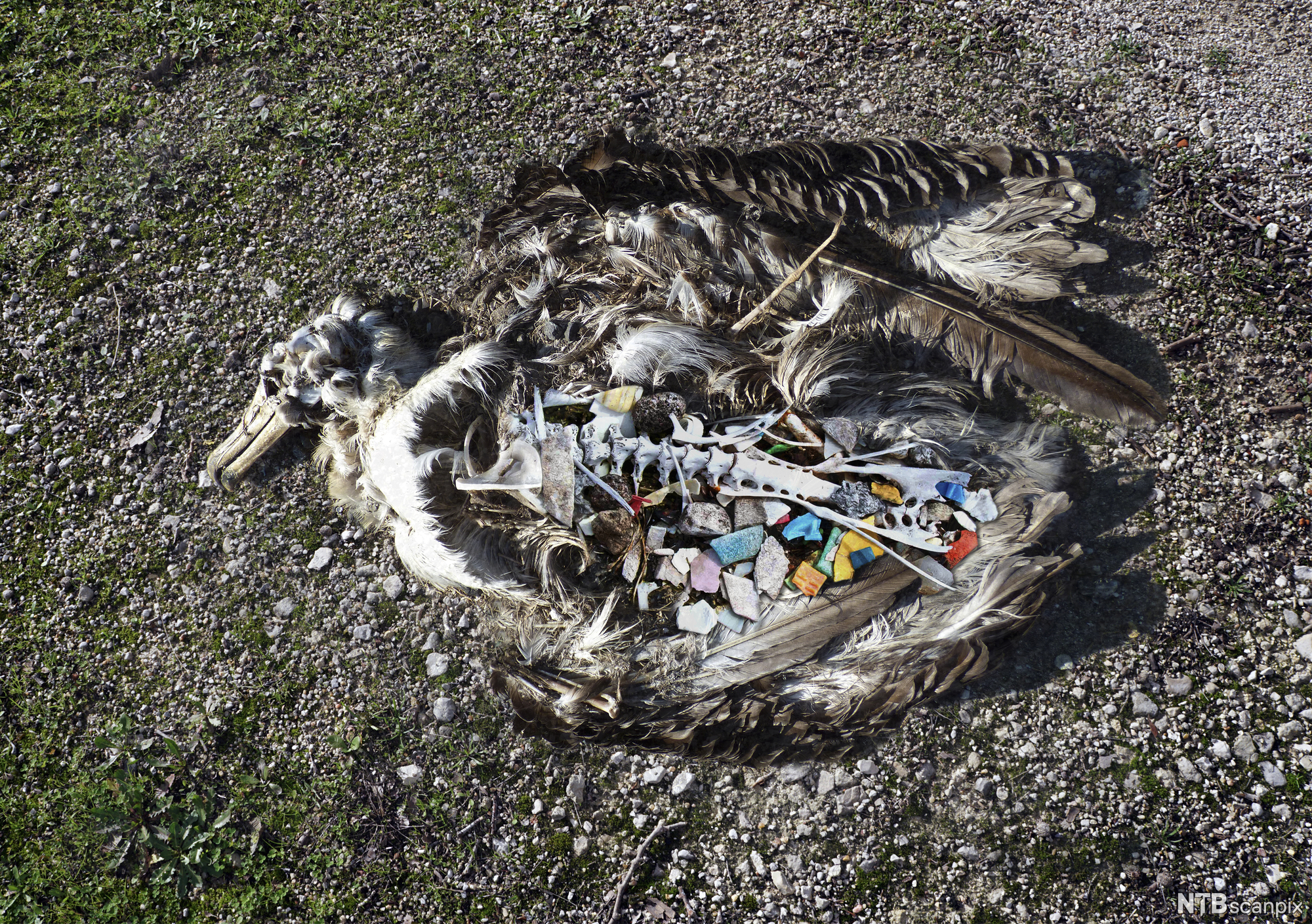
Ingestion of plastics is observed in many migratory aquatic life, birds, freshwater fish and terrestrial animals. Plastic ingestion is expected to have both adverse physical and chemical impacts on the species.
Physical impact: Plastics can cause injuries and blockages to the digestive system, reduce digestive capacity and thereby hinder growth. These effects may result in the death of the animal. In addition, some recent studies suggest that nanoplastics could cause the disruption of cellular metabolism processes[5].
Chemical impact: Plastics can transfer pollutants to wildlife such as persistent organic pollutants (POPs) and heavy metals such as mercury and cadmium.

Risk Assessment of Plastic Pollution to Migratory Species in the Mekong and Ganga River Basins

Impacts of Plastic Pollution on Freshwater Aquatic, Terrestrial and Avian Migratory Species in the Asia and Pacific Region
Learn more about the impact of plastics on CMS Family-listed species
How does the project support the implementation of the Convention?
The project will support the implementation of Resolution 12.20 Management of Marine Debris and Decisions 13.122 to 13.125 Impacts of Plastic Pollution on Aquatic, Terrestrial and Avian Species by generating new knowledge on the impact of plastics on migratory species occurring in terrestrial and freshwater ecosystems.
Under the CounterMEASURE II project, the CMS Secretariat will:
- Produce a report summarizing the current knowledge on the impact of plastic pollution on migratory species in freshwater and terrestrial ecosystems, with a focus on Asia and the Pacific region
- Assess the level of risk posed by exposure to plastic in the migratory species that occur in the Mekong and Ganges River Basin
- Conduct research on the scope and impact of plastic pollution in Mekong and Ganges River fauna with a focus on migratory species of freshwater fish
- Prepare a monitoring protocol on the impact of plastics on fauna living in the Mekong River Basin
- Conduct outreach activities to raise awareness on plastic pollution and its impact on migratory species in the Mekong and Ganges River Basins
Mekong River Basin
Which migratory species occur in the Mekong River Basin?
The Mekong River Basin is home to many CMS-listed species including the Mekong Giant Catfish (Pangasianodon gigas) ; the Irrawaddy Dolphin (Orcaella brevirostris) , the Bengal Florican (Houbaropsis bengalensis), the Eastern Imperial Eagle (Aquila heliaca) and the Sarus Crane (Antigone antigone).
Of note is the Basin’s freshwater fish diversity. To date, 768 freshwater fish species are scientifically documented in the Mekong River. For 24 per cent of the species, their migration status is known and of those species, 87 per cent are migratory species[6].
The fish migration in the Tonle Sap River in Cambodia is one of the largest migratory movements in the world in terms of the sheer number of fish involved. Based on the catch information from the Dai fishery, about 12,000 tonnes of fish are estimated to migrate from the lake down the Tonle Sap River each dry season[7].
Ganges River Basin
Which migratory species occur in the Ganges River Basin?
The Ganges River Basin is also an important ecosystem for many migratory species listed on the CMS appendices including: the Ganges River Dolphin (Platanista gangetica gangetica), the Gharial (Gavialis gangeticus) and the Asian Elephant (Elephas maximus indicus).
The Gangetic basin has rich avifauna and known to support 177 species of bird[8]. Many of them are migratory species that are listed on the CMS appendices including: the Sarus Crane (Antigone antigone); the Greylag Goose (Anser anser), the Common Shelduck (Tadorna tadorna), the Gadwall (Anas strepera), the Northern Pintail (Anas acuta), the Common Teal (Anas crecca), the Red-crested Pochard (Netta rufina), the Tufted Duck (Aythya fuligula), the Greater Spotted Eagle (Clanga clanga), the Common Crane (Grus grus), the Black-tailed Godwit (Limosa limosa), the Eurasian Curlew (Numenius arquata), the Marsh Sandpiper (Tringa stagnatilis), the Common Greenshank (Tringa nebularia), the Green Sandpiper (Tringa ochropus) and the Temminck's Stint (Calidris temminckii).
Learn more
- Populations of Freshwater Migratory Fish Have Plummeted in Last 50 Years
- Thousands Gear up for World Migratory Bird Day’s Second Peak Celebration on 12 October
- CMS Councillor Hogan Leads Mekong River Project
- Report I: Migratory Species, Marine Debris and its Management
- Report II: Marine Debris and Commercial Marine Vessel Best Practice
- Report III: Marine Debris: Public Awareness and Education Campaigns
With the generous funding from the Government of Japan and the support of the implementing partners - National Oceanography Center, Commonwealth Scientific and Industrial Research Organization and the Mekong River Commission
To learn more about the project, please contact the CM2 Migratory Species Focal Area Coordinator, Ms. Clara Nobbe at [email protected] or the CM2 Project Manager, Ms. Kakuko Nagatani-Yoshida at [email protected]
References in this page:
- [1] See https://nmcg.nic.in/pdf/birds%20of%20Ganga%20river.pdf
- [2] Baran, E. (2006). Fish migration triggers in the Lower Mekong Basin and other freshwater tropical systems.
- [3] Barrett, J., Chase, Z., Zhang, J., Holl, M. M. B., Willis, K., Williams, A., ... & Wilcox, C. (2020). Microplastic Pollution in Deep-Sea Sediments From the Great Australian Bight. Frontiers in Marine Science, 7, 808.
- [4] Hortle, K. G., Ngor, P., Hem, R., & Lieng, S. (2004). Trends in the Cambodian dai fishery: floods and fishing pressure. Catch and Culture, 10(1), 7-9. Campbell, I. C., Poole, C., Giesen, W., & Valbo-Jorgensen, J. (2006). Species diversity and ecology of Tonle Sap Great Lake, Cambodia. Aquatic Sciences, 68(3), 355-373.
- [5] See https://bit.ly/3ko7ZnD
- [6] Brun, N. R., van Hage, P., Hunting, E. R., Haramis, A. P. G., Vink, S. C., Vijver, M. G., ... & Tudorache, C. (2019). Polystyrene nanoplastics disrupt glucose metabolism and cortisol levels with a possible link to behavioural changes in larval zebrafish. Communications biology, 2(1), 1-9.
- [7] Horton, A. A., Walton, A., Spurgeon, D. J., Lahive, E., & Svendsen, C. (2017). Microplastics in freshwater and terrestrial environments: evaluating the current understanding to identify the knowledge gaps and future research priorities. Science of the Total Environment, 586, 127-141.
- [8] Jambeck, J. R., Geyer, R., Wilcox, C., Siegler, T. R., Perryman, M., Andrady, A., ... & Law, K. L. (2015). Plastic waste inputs from land into the ocean. Science, 347(6223), 768-771.



